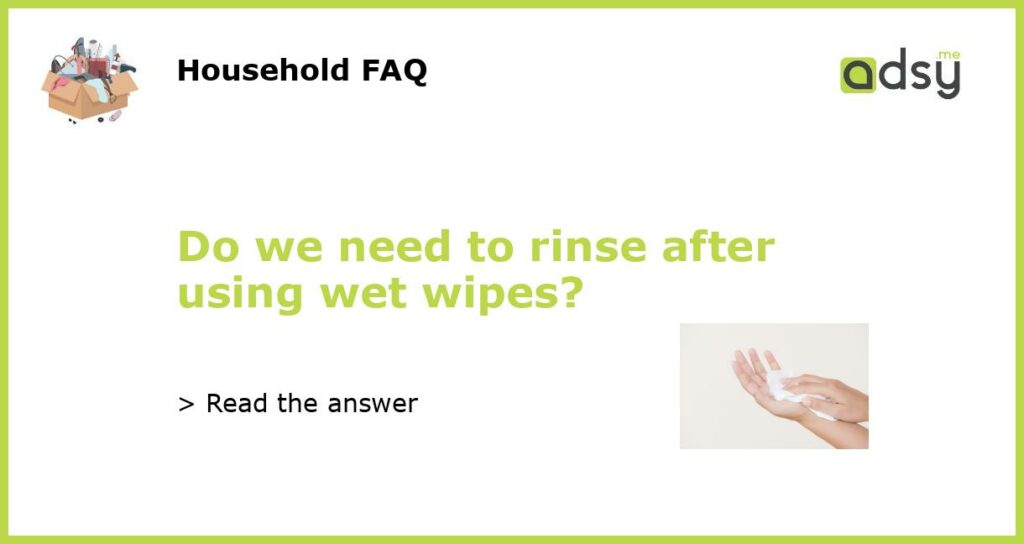Why Wet Wipes Have Become So Popular
Over the past decade, wet wipes have gained popularity as a convenient and quick way to clean surfaces, hands, and even ourselves. They have become a staple in households, offices, and public spaces, offering a convenient alternative to traditional soap and water. Wet wipes are pre-moistened disposable cloths that are often infused with cleansing agents, such as soap, disinfectants, or moisturizers. They are typically used for personal hygiene, baby care, or cleaning surfaces. However, the question remains: do we need to rinse after using wet wipes?
The Purpose and Benefits of Wet Wipes
Wet wipes offer several benefits that make them appealing for everyday use. They are portable and easy to carry, making them convenient for travel, outdoor activities, or when access to soap and water is limited. Wet wipes are designed to be gentle on the skin, making them suitable for sensitive areas or those with skin conditions. They can effectively remove dirt, oil, and bacteria from the skin’s surface, providing a quick and refreshing cleanse. Wet wipes also offer convenience and time-saving benefits, especially in busy environments where traditional cleaning methods may not be feasible.
Addressing the Need to Rinse After Using Wet Wipes
While wet wipes can effectively clean the skin’s surface, the need to rinse afterward depends on the type of wet wipe used and personal preference. Some wet wipes contain soap or cleansing agents that may leave residue on the skin if not rinsed off. In such cases, rinsing with water can help remove any remaining residue and ensure a thorough cleanse. Additionally, rinsing can help hydrate the skin and restore its natural pH balance, especially if the wet wipe contains ingredients that can dry out the skin.
Considerations for Different Uses of Wet Wipes
The need to rinse after using wet wipes can vary depending on the specific use case. For personal hygiene, such as cleansing the face or hands, rinsing may not be necessary if the wet wipe is fragrance-free and does not leave any noticeable residue. However, for cleansing sensitive areas, such as the intimate area, it is generally recommended to rinse with water to maintain proper hygiene. For cleaning surfaces, rinsing may not be required unless the surface is used for food preparation or comes into contact with the mouth or body.
Finding the Right Balance for Effective Use
Ultimately, the decision to rinse after using wet wipes comes down to personal preference and the specific product being used. If using wet wipes that contain soap or cleansing agents, rinsing afterward can help ensure a thorough cleanse and remove any potential residue. However, for fragrance-free wet wipes that do not leave residue, rinsing may not be necessary. It’s important to read the product label and follow any instructions provided by the manufacturer. Additionally, maintaining good hand hygiene through regular handwashing with soap and water is always recommended, especially when dealing with germs and bacteria.






